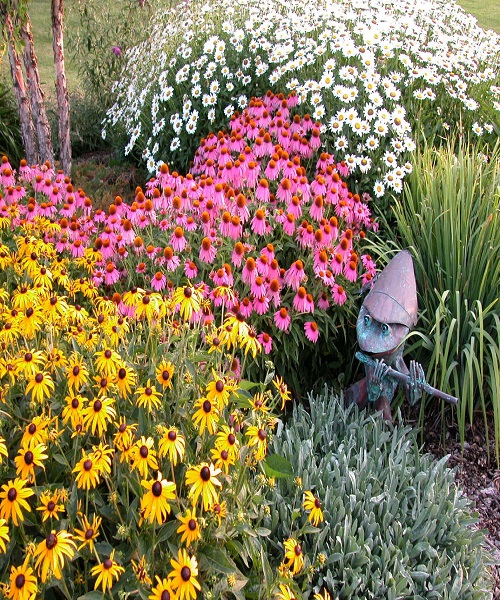People often split and divide perennials in the spring and fall, but many perennials can be split as soon as they stop blooming in the middle of summer.
Summer splitting has several benefits for you and your landscape!

Why and how to divide perennials after they bloom in the summer
When you divide plants in the summer, you can see your flowerbeds at their fullest growth. This means you can really see which plants are getting too close to each other or are getting too big. Even better, it’s easy to see where you need more plants to fill in empty spots.

This isn’t the case during the spring and fall when plants have not yet developed or have died back. It can be hard to tell where the plants will really grow to fill the space.
What is the significance of this? Because filling your flowerbeds is essential to eliminating weeds and reducing the amount of mulch you need. Both are excellent ways to keep your beds clean and your stress levels down!
But dividing perennial plants in the summer also helps them a lot. Plants have plenty of time to grow new roots before winter if they are divided in the summer after blooming.
This gives them a better chance of surviving, but it also allows them to be fully prepared to grow and blossom in full force the next spring.
That is just not the case for many springs or fall-divided perennials, which require time to establish themselves during their first year.
Divide Perennials During the Summertime
It’s crucial to know which perennials to avoid when dividing plants in the summer.
In particular, the ornamental grasses. The summer heat is simply too much for these plants, which bloom in the fall, to handle when trying to establish new plants. In addition, small shrubs, roses, and other small plants are not suitable for summer splitting because of their small size.
But despite that, there are many that can! Like daylilies, hosta, coral bell, coneflowers, daises, black-eyed Susans, and almost every other perennial plant once it has finished blooming.

Also, make certain that the plant has finished blooming. Perennials can be difficult to move while in bloom. Their entire attention is on blossoms, thus moving the plant now could be lethal to it.
Specifics of the Transplantation Process in the Summer
This method is most suitable for daylily and hosta plants, which can be cut back to within an inch of their root system for easy transplanting. A sharp shovel can be used to separate the plant into individual seedlings.

When it comes to planting size, smaller divisions produce smaller plants, whereas larger divisions produce larger plants. A reasonable rule of thumb is to keep the root parts of manageable plants no larger than 3 inches in diameter.
Summer heat may be tough on plants, so replant with plenty of compost and keep them well hydrated. By the end of the summer and the beginning of the fall, you will begin to see new foliage.
Divide Additional Perennials
For almost all other perennials, start by cutting back any dead flowers and stems to the base of the plant. In order to protect the new plants while they re-establish their roots, you may want to keep the foliage intact.
Split the plant open with a sharp shovel or knife after you’ve dug it up. Replant with compost and give it plenty of water, just like you did with the hostas and daylilies.
The top foliage may wither or possibly fall off altogether depending on how hot it gets during the summer. Keep watering and new leaves and foliage will begin to sprout.
Make a Garden Holding Bed

A holding bed in your garden can serve as a temporary solution if you don’t have enough room for transplants at the present time. A terrific method to have plants on hand, or even to present to friends, family, and neighbors next year.

